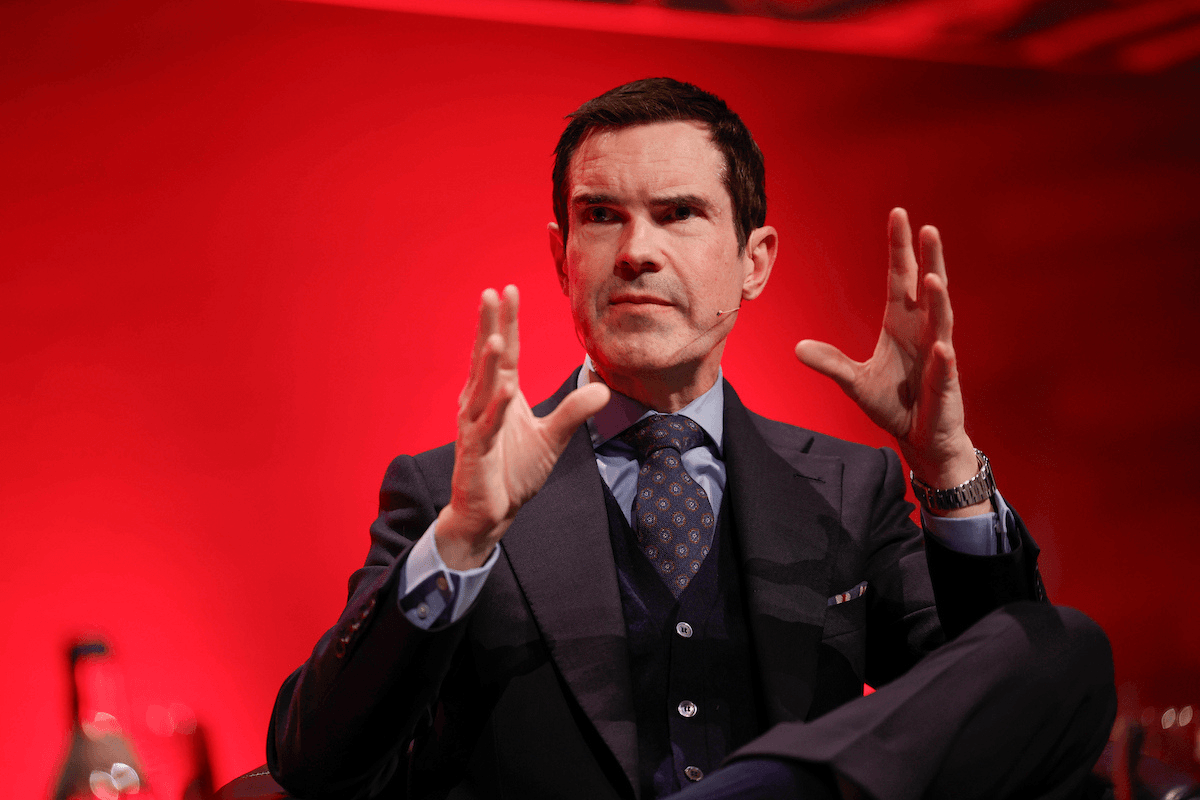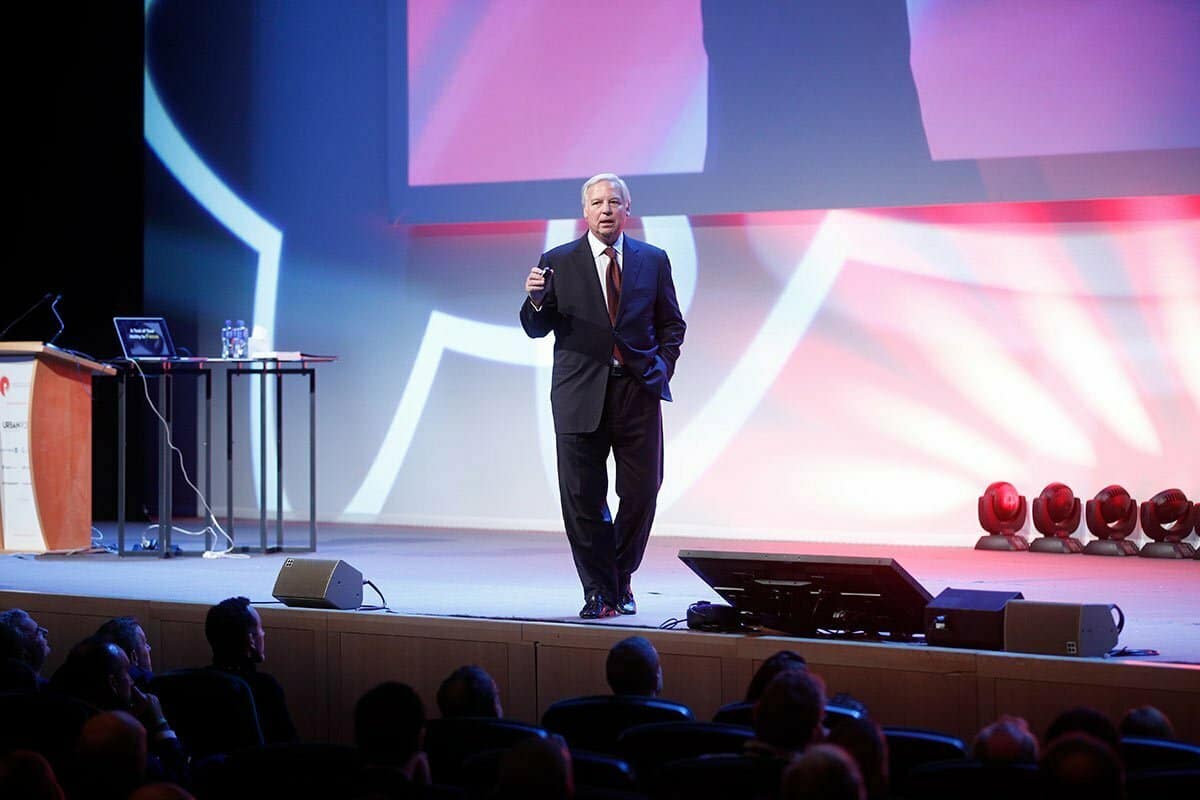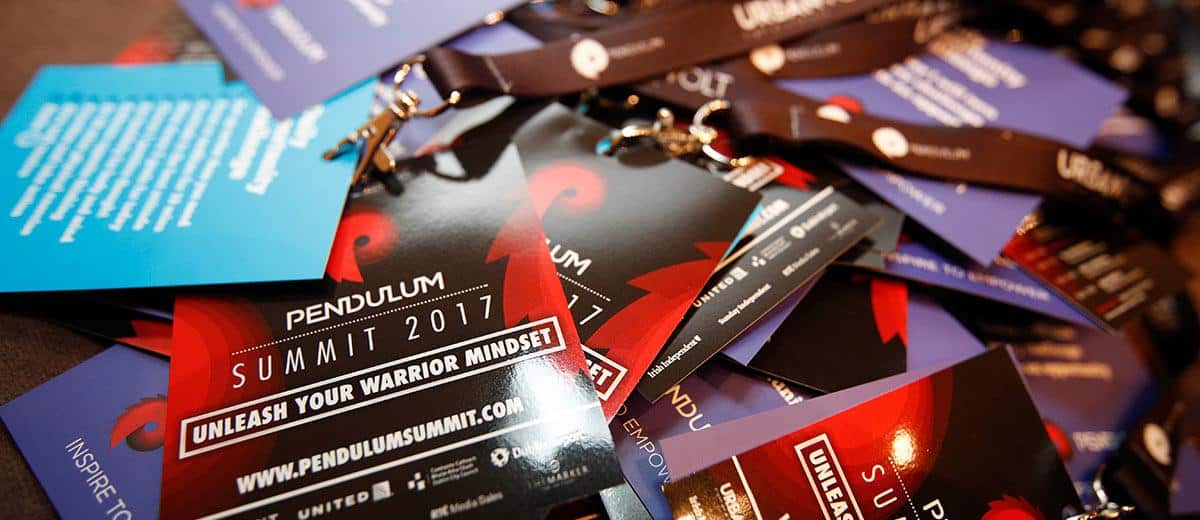Part 1:
Throughout the day, Dr. Barry aimed to try and open our whole mind to the world of emotional resilience. This is something that all of us need to have in our locker. Often, companies worry about their resilience but they really forget that every company is basically composed of its people. It’s the emotional resilience of that group that decides how well a company is going to survive the difficulties and problems that will be thrown at us.
What is emotional resilience? Emotional resilience is our ability to cope with the slings and arrows of life. The ability to be able to adapt, to change.
Why is emotional resilience important? We know for example that 80% of all cases of absenteeism in companies is due to stress, anxiety and depression. If we want to reduce this, make our companies and our individuals more resilient we have to improve their emotional resilience.
Many people think that emotional resilience is either something you have or you don’t have and this is something Dr. Barry has vehemently protested against for most of his working life. He has always believed that resilience is something that we can learn. It’s something we can develop, something we can practice.
Is there a neuro scientific basis to this? Yes, there is. The brain is this amazing organ. It has the ability -what we call neuroplastic- which means that it has the ability to literally increase or decrease the connections between individual neurons. In the process of doing that, it can actually completely change the way we think, feel and behave. We know for example from epigenetics that things that we do in our environment can affect our genes, which in turn affect our lives, our connections which in turn affect our pathways and can make us more emotionally resilient.
He began with the concept of personal skills. Dr. Barry has always believed that there are a number of personal social and life skills that we can develop and learn that can improve our emotional resilience.
He started with the simplest of all- Control.
We are living in a world which is completely out of control at this moment in time. The secret to anxiety, for instance, many people get incredibly anxious because they actually believe that they can control life. A leading factor behind frustration and behind anxiety is this demand for absolute control – absolute control is looking for a 100% certainty, 100% order, 100% security, in 100% perfection.
Coin Exercise
Dr. Barry starts this morning by giving you a great exercise to do. He asks you to get out a sheet of paper and on that sheet of paper list out 10 things] that you love doing every day.
It can be anything from your daily walk, to a glass of wine with dinner, or watching netflix. Write down 5 to 10 items that you particularly really love doing every day.
For those of you who want to learn to live with uncertainty, who want to try and reduce their anxiety and learn to improve their frustration levels. Dr. Barry urges you to perform the following exercise for a period of four weeks.
Get a coin and on this coin is heads and a tails. For the next four weeks every solitary time, for example, let’s take a Netflix series every episode that you want to see you have to toss a coin. Heads, you can watch it. Tails, you can’t and repeat that with everything.
The coin demonstrates what life is really like because with life there’s always a percentage chance that something will or won’t happen. But as people we want absolute 100% certainty. So what this exercise does is at the end of four weeks, you will be going stark raving mad But you start to learn to adapt when things don’t go your way and that is really important for real life.
There’s a 50/50 chance when I’m doing the coin exercise but in real life there’s a much higher percentage chance that things will go your way. So what this teaches us is the incredible skill of adaptability because resilience at its heart is about learning to adapt.
Exercise for disorganisation
Life is innately and basically disordered and there is a wonderful exercise for those of you who struggle to like to have everything a certain way. The people who struggle if they go into a room and it is very disorganised and nothing is in place. You need to get to your partner or somebody you live with two to three times a week to go into a room and just make it really untidy just mess the whole room up.
When you return you then have to live and work around that untidy space for 24 hours and many people particularly women have come back to Dr. Barry and said they can stand and can cope with the coin exercise, but this is just too much. They cannot cope with the disorder, but it’s amazing. After four weeks of doing this you suddenly notice that you’re learning to adjust your learning to adapt your journey to becoming more resilient. So when this happens to you in real life, you become much more resilient.
Imagining the worst case scenario
Another thing that we all absolutely fall into the trap of is we catastrophize and catastrophizing is where we go to the right side of our brain. We start visualizing all the worst possible case scenarios and all the terrible things that can happen to us.
The reason that we do this is that our prefrontal cortex particularly on the right hand side has been set up by evolution to always anticipate what might happen in the future. However, for some of us who get very very anxious, unfortunately what we do is we start to use this side of our brain, this right prefrontal cortex and we catastrophize, catastrophize, catastrophize and of course the more we catastrophize the more stressed we get and physically anxious.
Exercise to deal with catastrophizing
It is really important that people learn the technique to deal with catastrophizing because 90% of what a person worries about actually never happens. Another very simple exercise is you must visualize a glass of milk on the table. Suppose a person then asked you to visualize what you mean by spilt milk. Well, most people would tell you that spilt milk is a pool or an absolute mess, but suppose Dr. Barry told you that spilt milk could be the tiniest little drop of milk on the table, that too is spilt milk.
So what people actually do in their emotional mind is they turn that drop into a puddle. As people we turn fairly ordinary bad news to literally assume the absolute worst and of course the more we do that the more anxious we become. The more we struggle because our brain doesn’t do well and our body doesn’t do well if we’re in a constant state of high anxiety all the time.
Another exercise for catastrophizing
So here is a wonderful exercise to do for four weeks. Dr. Barry wants you to get a notebook and write all your catastrophizing down. By transferring your catastrophizing it is very pragmatic you can see for your own eyes how big or small a problem is.
If you do this over and over and over again for four weeks, you start to catch it in your head and you suddenly begin to say “hold on a minute, no, I’m doing it again. I am catastrophizing. There is no evidence that that’s going to happen.”
Exercise for unconditional self-acceptance
The biggest resilient skill of all is to develop unconditional self-acceptance, but what many people do in life is they spend their whole life judging themselves. So here’s another little exercise. Dr. Barry wants you to get a piece of paper and draw a straight line and at one end, I want you to put 1 and at the other end, I want you to put a 100.
1 means that you’re a terrible person and 100 means that you’re a fantastic person. Now what Dr. Barry urges you to do is rate yourself between 1 and 100 as a person. Secondly, he wants you to rate how other people see you as a person on this same scale.
Dr. Barry then moved on to ask a few questions. You make an absolute mess of something at work and something goes badly wrong. Where do you rate yourself then? Where do other people rate you? You’re diagnosed with depression and put on medication and word gets out amongst your friends, colleagues and social circle that you’re on treatment for depression. Where would you rate yourself then? Where would other people rate you?
Most people out there will find the rating is going up and down depending on the question. For instance if you were asked an alternative question that you’ve done brilliantly as an assignment. Where would you rate yourself then? You’d probably go back up and we’re would other people rate you? They would rate you back up as well?. So everyone is playing this racing game all day where we go back and forth and up and down that rating scale. Sometimes we’re feeling fantastic and sometimes we’re feeling terrible, we’re feeling down, we’re feeling anxious and that is completely ok.
The real question here is can you rate a human being at all? Well, the honest answer is we can’t. Why? Because every person listening to me today is a special, wonderful, unique person. There is nobody like you in the world. You are a special wonderful person and you can’t be compared to another.
We all are totally unique individuals and that’s because of our genetic and environmental surroundings that create the individual person. But what we actually do is unfortunately we merge who we are with what we do and this is where the trouble begins.
If we could develop unconditional self-acceptance, we would learn to accept ourselves as special wonderful people that we are and just instead take responsibility for our behavior, our actions. The most wonderful example of this in practice in the business world is failure because success and failure are the two ends of the spectrum. If a person is doing very well they are successful and if a person is doing very badly they are a failure. But a person can be both; they can be both a success and a failure as a person.
Success is built on a whole platform of multiple failures, but it’s learning from those failures that makes you a success. There’s no such thing as 100% perfection. It doesn’t exist. So if we take the concept of unconditional self-acceptance, we are allowed to rate ourselves as the person but we are not allowed to accept other people’s rating of us as a person.
Another exercise for unconditional self-acceptance
Here’s a wonderful exercise for this. Dr. Barry outlines a task for people who are struggling with perfectionism to do for the next four weeks. You must first make sure you do the chaos, the disorder exercise that is referred to above. But secondly, every day you must mess up something in your appearance. It could be the way you wear your hair. You could wear it completely differently. Wear different coloured socks, different types of shoes.
The whole idea is that you have to live without imperfection for 24 hours. And the whole idea is that in the beginning you’re very aware of imperfections, but after awhile you start to learn to adjust. You learn to realise they’re not important because an awful lot of our imperfections are the things that we are worried about but they are not really relevant at all. So practice this in your life practice, unconditional self-acceptance and resilience.
Part 2
In his second session of the day, Dr. Barry explored the personal resilience skill of Mindfulness. Through a conscious effort of remaining in the present moment, practicing simple mindfulness exercises outlined below, we can all achieve a sense of calmness and serenity in our daily lives. See a summary of his session here:
Now we’re going to explore another personal resilience skill, which I believe is wonderfully helpful to keep us well from a mental health point of view and that’s the world of mindfulness. Now most people hear the word mindfulness and they have visions literally of a Buddhist monk, eyes closed, sitting cross-legged for hours. Well, the good news for you is that that might be very helpful in the Buddhist tradition, but in the world that we live in, that form of meditation or mindfulness is really not what we need. So mindfulness is simply being in the present moment. Just listening here this morning, listening to me you are actually being in the present moment and you probably didn’t even recognise it.
Mindfulness is a very very important skill to develop in ourselves because in real life if we are very honest with ourselves, we spend most of our time either in the past or in the future. We spend most of our time regretting things that have happened, perhaps we are even anxious, ashamed, guilty, annoyed or frustrated about things in the past. And then we switch from that to the future- what might happen in the future, all the things that could technically happen. I mean how many of us are spending all of our present time when we’re in various stages of lockdown throughout the world all the time looking into the future? What will happen in the time to come? What will happen in the next 12 months?
The problem with that is that if we live in the past and we project to the future. Unfortunately, what happens is we don’t live in the present.
There are very natural reasons for that. The brain has the ability to look and learn from the past and project into the future and it happens unconsciously and that’s actually where the real difficulty occurs. If our brain was actually to take all the information coming from every side, we would be overwhelmed. So what it does is, it switches it down to a subconscious level so most of what happens in our brain and our bodies is going on completely independently of us. A very small amount of our brain is used actually for thinking about where we are and what’s going on in the world around us. So when we move into the world of mindfulness, it’s a very different animal altogether.
For example, how many of you can relate to a walk- maybe in a beautiful surroundings, beautiful trees or a lovely river, sea or lake scene and you’re busy talking about your pensions, or something that’s going on with the children or you’re busy maybe thinking about something that happened in the past. You spend all of that lovely walk maybe 30 minutes, maybe an hour away completely from where you are and you’ve missed the whole beauty of what’s going on around you.
To a certain extent, mindfulness is teaching us this skill of bringing us into the present. It’s fantastic for our brains because we know from neuroscience that the right side of our brain is switched to the left side of our brain when we use mindfulness. The right side is the part that gets agitated, anxious, annoyed and frustrated. The left side of our brain is where we’re much calmer. So we know from a lot of research that mindfulness shifts all the attention over to the left side of the brain and it has ultimately lots and lots of other benefits.
- It increases your dopamine system, in your feel-good endorphins in the brain.
- It drops down your stress levels,
- makes you less anxious, less stressed.
We know for example that it has the ability neuroplasticity in the brain to actually increase the size of your hippocampus or your memory part of your brain and another critical part called the insula can actually be increased if you’re doing it on a regular basis.
So there’s all these wonderful benefits to a lot of doing a lot of mindfulness. But in the real world, I’ve always been a pragmatist and we just simply do not have the time or the space to do long periods of meditation, which some people feel is the only way that you can develop mindfulness. So I’ve always believed in simple mindfulness exercises. I try to get people to do this two or three times a day. Shut down everything, turn off your phone, shut everything down and do it for 2 to 3 minutes and you will see huge benefits in your life.
Exercise 1: Consider doing every day for four to eight weeks a five-minute mindfulness awareness exercise. Go into the garden, sit down somewhere and start opening your eyes and your ears and your sense of smell might be in the garden. Just spend a couple of minutes looking around you, look at all the things you were missing, the color of the trees, the bird then listen to them singing, maybe the different smells, maybe the different noises in the background. For five minutes, you become absorbed in a totally different world, in the present moment.
Of course, that’s wonderful for us.
Exercise 2: And then perform the three-minute breathing space which is one of these very simple exercise that can be life transforming, a great resilience skill because anyone can learn to dampen down their stress levels and anxiety levels on a regular basis, then of course the benefits are going to be absolutely massive.
- If you’re sitting at home, sit up straight, hands by your side and close your eyes.
- And for one minute, become aware of all the thoughts going on in your head, the feelings that you have, the emotions that you have and just become almost a spectator to them. Don’t try to interfere with them or change them. Just become aware of them.
- Now for one minute, focus your whole attention on your breath. Become aware of your breath coming in and out. Even the sensation of it coming into your abdomen, just feel that coming in going out but don’t try to change it or influence it in any way. Just become aware of it.
- And now for 15 seconds. Become aware of your right arm. And your right hand. Don’t just become aware of them. Don’t try to change it in any way, just become aware of them.
- Another 15 seconds. Become aware of your left arm and your left hand.
- And now become aware for 15 seconds of your right leg and your right foot and become aware of your left leg and your left foot?
That’s it. That’s the simple three minutes breathing space and that’s that’s a nice term, a breathing space. A little gap, a little moment, just to get you to drop down those stress levels and become much more aware of being in the present moment. Try and practice this whole mindfulness concept in your life for everything you do whether you’re sitting at a meal, whether it’s going for a walk either on your own or with someone you love, just learn to be in the present moment.
That and the three minutes of breathing space will go a long way towards making you increase your resilience.
Part 3
For this session Dr. Barry explores the world of interpersonal or social skills. They can sometimes be called soft skills. These soft skills are quite possibly the most important skills in life because the people who have these soft skills are people who get things done best in life and are often the happiest in life. They often have better quality interpersonal relationships and often do better in the workplace.
The most important soft skill is Empathy. Empathy helps us to relate to each other as human beings. Empathy is the ability to sense another person’s emotions and to be able to interact with that person at that level. It’s like a meeting of minds.
What happens is when somebody is sharing their story, our brain is already mirroring that in our own minds and our own empathy comes from that. However in order for this to work we absolutely must work on it. If we want to become truly fully integrated human beings.
There are two kinds of empathy: There is emotional empathy and cognitive empathy.
Emotional empathy refers to the way that our bodies are responding to the emotions we are experiencing while in the presence of the other person and their emotional experience.
Cognitive empathy also known as ‘perspective-taking’ is not really what most of us would think of as empathy at all. Cognitive empathy is basically being able to put yourself into someone else’s place, and see their perspective. It is a useful skill, particularly in negotiations for example, or for managers.
Emotional Empathy Exercise
Well, here’s a few very simple exercises you can do for six weeks. You need to become aware in all your social interactions at work, at home, when you’re out in the community and in shops and things like that just observe situations where it’s quite clear a person has had a positive empty experience.
And after a while you will begin to notice more and you will become a lot more perceptive of what a positive and negative experience is. For the next six weeks this is where the real fun begins; you have to practice this in your life. So in every solitary social interaction that you have you have to shut down your own desire to rush in and give all your own views and things like that. You must focus in on the emotions coming from the other person.
You must kind of assess where they’re at from an emotional point of view and you notice that things happen to you. You get quieter, you listen a lot more, you’re less likely to jump in to give your own point of view. You’ll find after a while that during your day there’s a great balance in the communication back and forth and over and back. If you can develop emotional empathy, cognitive empathy is not that difficult to develop. It’s more a problem solving approach.
But you have got to develop emotional empathy. So you must practice that exercise in order to develop the skill needed.
We as people are not very good at picking up on nonverbal cues. You have cells in the brain called spindle cells, these are really fast at information gathering and sending neurons in the brain and they’re doing things very rapidly because they’re trying to give you kind of instant information, but you have to be very careful about that information.
Exercise 2:
Here’s two simple ways of improving your nonverbal cues: firstly, this is done for 4 weeks, you need to become acutely aware in every social situation of not just what the person is saying, but look at everything about them and does it seem correct? Like if for example a person is telling you that’s very funny, but their face is not showing us very funny or if a person is telling you they’re very sad, but they don’t seem very sad.
You learn to read people a lot better because that’s reading the nonverbal cues besides just what they are saying alone.
Here’s a great exercise for those of you who make instant assumptions. We all do it and that is ok. A great tip is when you have made an assumption or a first impression of someone, write it into your notebook and then after that, look for information from other sources to prove your assessment of that person. You’ll often find that maybe it’s not the right assumption to make. Always remember your first impressions are useful, but don’t always stick to them or rely on them.
Frustration
Another wonderful skill that Dr. Barry spoke about is the world of frustration. All of us at some point in our lives have gotten stressed. We have gotten anxious or we get incredibly frustrated. Frustration, Dr. Barry likes to call it the great demotion of mental health. We all know about being anxious and about being depressed, but we never talk about frustration and frustration causes so much problems in our working lives and in our everyday life. The person who’s frustrated is very irritable and can be bad tempered.
They’re the kind of people who blast up behind you on the motorway and flush you out of the way. They’re the people who want everything done now and the trouble with that is that it can be very damaging and it often goes with lack of empathy.
The people who suffer with low frustration tolerance basically want to avoid any discomfort in life and they want the world to change to suit them. They want situations to change but they don’t want to change themselves and that’s such a damaging non resilient way of looking at life.
Frustration Exercise
So if you are struggling with frustration ask yourself these three questions.
Firstly, “what is my long-term goal in this situation?”
Secondly, “what short-term pain am I trying to avoid in this situation?”
Thirdly, “what changes in my thinking and behavior do I need to make to achieve my goal?”
You’ll notice that if you could write into your notebook those three questions and every time you’re frustrated about something for 4 weeks answer those three questions. You’ll very quickly find that trying to dodge something all the time is a lot harder rather than making that difficult decision, rather than having that difficult conversation. If you can do this you’ll see a huge difference in yourself.
Dealing with a presentation
In the working area whether it’s on Zoom or whether it’s face-to-face people tend to get incredibly anxious and panicky if they have to give presentations. The secret to presentations is as follows: all social anxiety is about perception versus reality. We have thoughts and perceptions about what happens in social performance situations. We think that people will see that were incredibly anxious.
We think that people would see all the physical signs of anxiety, were blushing and sweating and shaking. We think that people will see that all the information we’re giving you isn’t exactly 100% perfect. In fact when in reality most people who are in the audience see very little. They wouldn’t see you were anxious. If you were there for a week most of the time they’ll remember about maybe 10% of the information you give them. Why? Because human beings are self-obsessed and that is the secret to all social anxiety.
Exercises to help in a presentation
Here’s a few little exercises to do that might help you with presentation anxiety.
The first exercise is what we call an audience anxiety. So what you must do is for the next six/eight/ten presentations that you’re in the audience for you need to see if you can actually see the physical signs of anxiety. You’ll find out very quickly and to your surprise that it’s very very difficult. Secondly, try and take note of what they’re wearing and then an hour later. Write down exactly what they were wearing and the last five people you talk to.
Can you tell me what they were wearing? And the reality is you won’t be able to remember. Why? Because as human beings we are hopeless at recognising details and information. The third thing is when somebody gives a presentation an hour later, write down all the main facts of their presentation and you’ll notice that you’re struggling like hell to do so, why because your mind goes walkabout when somebody’s giving their presentation.
So even if you are there and you’re worrying, in reality people see very little and retain very little so if you can just apply those concepts and if you can remember that the secret to presentation anxiety is to have little kind of tips along the way, props to remember your key points.
Therefore, if you do get a break you’re able to look over them and have your glass of water beside you and most importantly of all introduce humor from the very beginning to the very end. Humor is what gets a person over presentation anxiety mode. Make a crack about yourself at the very start and make sure that people see you as a normal human being.
Want More? Check Out Our World-Class Virtual Learning and Event Solutions…
Pendulum Inspired Leadership Programme:
A world-class online and interactive learning experience that focuses on 8 core modules pertaining to Self-Empowerment, High Performance, Leadership, Goal Setting, Emotional Intelligence, Creativity, Innovation, Communication and more.
For more info visit pendulumuniversity.com
Pendulum Talks:
We believe learning should excite you, exhilarate you, captivate you, and should be juicy enough to tempt you for more! Pendulum Talks works with a host of global visionaries, entrepreneurs, leadership experts and motivators to deliver world-class content and game-changing insights directly to you.
For more info visit pendulumtalks.com
Virtual Event Solutions:
Virtual events provide an excellent way to bring people and brands together during these unique times. They can even open up your brand to new audiences with global reach, accessible content, and excellent ROI.
Our expert team can put together a highly professional audiovisual package for your presentations, complete with slideshows, Q&As, polls, and other features, alongside a full suite of analytics. Our virtual event management will take consumer and personnel safety to high standards without compromising your brand message.
Virtual events are accessible, budget-friendly, and truly scalable, suitable for events of any size and audience.
Get in touch today by email welcome@pendulumsummit.com








